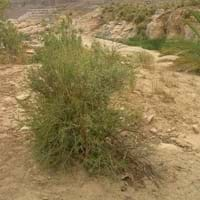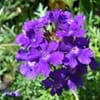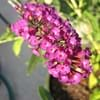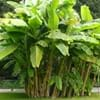Life Span
Annual
Perennial
Type
Flowering Plants
Flowering Plants, Shrub
Origin
America, Europe
North Africa
Types
Clump verbena, Moss verbena, Annual Verbena, Brazilian verbena, Sandpaper Verbana
Not Available
Habitat
Forest edges, Hillside, Woods
Desert, Rocky Mountains
USDA Hardiness Zone
3-9
Not Available
AHS Heat Zone
Not Available
Not Available
Sunset Zone
not available
Not Availble
Habit
Not Available
Bushy, Evergreen
Flower Color
Blue, Dark Purple, Light Purple, Red, White
White
Flower Color Modifier
Not Available
Bicolor
Fruit Color
Not Available
Black, Blue
Leaf Color in Spring
Dark Green
Green, Dark Green
Leaf Color in Summer
Dark Green, Green
Dark Green
Leaf Color in Fall
Dark Green, Green
Green, Dark Green
Leaf Color in Winter
Not Available
Green
Leaf Shape
Oblovate
Ovate
Plant Season
Early Spring, Late Autumn
Summer
Sunlight
Full Sun, Partial shade
Full Sun
Type of Soil
Well drained
Clay, Loam, Sand
The pH of Soil
Neutral, Slightly Acidic
Acidic, Neutral
Soil Drainage
Average
Moist but well drained
Bloom Time
Early Fall, Early Summer, Fall, Late Spring, Late Summer, Summer
Late Summer, Summer
Tolerances
Not Available
Moisture
Where to Plant?
Container, Ground
Container, Pot
How to Plant?
Seedlings, Stem Planting
Seedlings, Semi-hardwood cuttings
Plant Maintenance
Medium
Medium
Watering Requirements
Do not water frequently, Medium, Never Over-water, Requires regular watering, Requires watering in the growing season
Needs less watering
In Summer
Lots of watering
Ample Water
In Spring
Moderate
Average Water
In Winter
Average Water
Less Watering
Soil pH
Neutral, Slightly Acidic
Acidic, Neutral
Soil Type
Well drained
Clay, Loam, Sand
Soil Drainage Capacity
Average
Moist, Well drained
Sun Exposure
Full Sun, Partial shade
Full Sun
Pruning
Prune for shortening long shoots, Prune if you want to improve plant shape, Prune lower leaves, Prune regularly, Prune to control growth
Prune after flowering, Prune for shortening long shoots, Remove dead or diseased plant parts
Fertilizers
All-Purpose Liquid Fertilizer
Any balanced general purpose fertilizer
Pests and Diseases
Not Available
Healthy tree
Plant Tolerance
Drought
Moisture
Flower Petal Number
Single
Not Available
Fragrant Bark/Stem
No
Yes
Showy Foliage
Not Available
Yes
Foliage Texture
Not Available
Fine
Foliage Sheen
Not Available
Glossy
Invasive
Not Available
No
Attracts
Butterflies
Butterflies
Allergy
Arthritis, Asthma, Chest Pain, Itchiness, Whooping Cough
Not Available
Aesthetic Uses
Showy Purposes
Showy Purposes
Beauty Benefits
Not Available
Acne, Good for skin
Environmental Uses
Air purification
Air purification, Food for birds
Medicinal Uses
Arthritis, Gallbladder Diseases, Itching, Jaundice, Joint pain, Kidney problems, Liver problems, Metabolic disorders, Sore throat, Upset stomach, Urinary tract problems
Antibacterial, anti-cancer, Antidiabetic, Heart problems, Kidney problems, Respiratory Disorders, Thyroid problems
Part of Plant Used
Flowers, Root
Flowers, Leaves
Other Uses
Air freshner, Can be made into a herbal tea, Cosmetics, Decoration Purposes, Economic Purpose, Employed in herbal medicine, Oil is used for aromatherapy, Oil is used in perfume, soaps, creams, etc., Showy Purposes, Used As Food, Used as Ornamental plant, Used for flavoring in Liquors, dairy products, gelatins,puddings, meats, candies, etc., Used for fragrance
Used as essential oil, Used in herbal medicines
Used As Indoor Plant
No
No
Used As Outdoor Plant
Yes
Yes
Garden Design
Bedding Plant, Bonsai, Container, Edible, Herb
Container, Edible, Fruit / Fruit Tree, Shade Trees, Tropical
Botanical Name
Purpletop Vervain
Myrtus nivellei
Common Name
Verbena
Saharan myrtle
In Hindi
verbena
Saharan myrtle
In German
Eisenkraut
Saharan myrtle
In French
verveine
myrte subsaharienne
In Spanish
Verbena
mirto subsahariana
In Greek
λουίζα
Σαχάρας μυρτιά
In Portuguese
verbena
murta Saharan
In Polish
werbena
mirt Subsaharyjskiej
In Latin
Grindelia
myrto Saharan
Phylum
Magnoliophyta
Magnoliophyta
Class
Magnoliopsida
Magnoliopsida
Family
Verbenaceae
Myrtaceae
Clade
Not Available
Angiosperms, Eudicots, Rosids
Tribe
Not Available
Not Available
Subfamily
Not Available
Not Available
Properties of Verbena and Saharan Myrtle
Wondering what are the properties of Verbena and Saharan Myrtle? We provide you with everything About Verbena and Saharan Myrtle. Verbena doesn't have thorns and Saharan Myrtle doesn't have thorns. Also Verbena does not have fragrant flowers. Verbena has allergic reactions like Arthritis, Asthma, Chest Pain, Itchiness and Whooping Cough and Saharan Myrtle has allergic reactions like Arthritis, Asthma, Chest Pain, Itchiness and Whooping Cough. Compare all the properties and characteristics of these two plants. Find out which of these plant can be used as indoor plant. If you are interested to decorate your house and garden, find out aesthetic uses, compare them and select the plant which will beautify your surrounding. Along with beautification, try comparing medicinal and edible uses of Verbena and Saharan Myrtle and you can choose the plant having best and most benefits.
Season and Care of Verbena and Saharan Myrtle
Season and care of Verbena and Saharan Myrtle is important to know. While considering everything about Verbena and Saharan Myrtle Care, growing season is an essential factor. Verbena season is Early Spring and Late Autumn and Saharan Myrtle season is Early Spring and Late Autumn. The type of soil for Verbena is Well drained and for Saharan Myrtle is Clay, Loam, Sand while the PH of soil for Verbena is Neutral, Slightly Acidic and for Saharan Myrtle is Acidic, Neutral.
Verbena and Saharan Myrtle Physical Information
Verbena and Saharan Myrtle physical information is very important for comparison. Verbena height is 6.56 cm and width 10.50 cm whereas Saharan Myrtle height is 200.00 cm and width 200.00 cm. The color specification of Verbena and Saharan Myrtle are as follows:
Verbena flower color: Blue, Dark Purple, Light Purple, Red and White
Verbena leaf color: Dark Green
Saharan Myrtle flower color: White
- Saharan Myrtle leaf color: Green and Dark Green
Care of Verbena and Saharan Myrtle
Care of Verbena and Saharan Myrtle include pruning, fertilizers, watering etc. Verbena pruning is done Prune for shortening long shoots, Prune if you want to improve plant shape, Prune lower leaves, Prune regularly and Prune to control growth and Saharan Myrtle pruning is done Prune after flowering, Prune for shortening long shoots and Remove dead or diseased plant parts. In summer Verbena needs Lots of watering and in winter, it needs Average Water. Whereas, in summer Saharan Myrtle needs Ample Water and in winter, it needs Less Watering.





